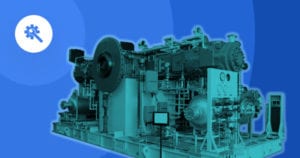
Traditionally, industrial organizations have sought to acquire equipment and build processes that are robust and sustainable for long periods of time because that is how they can justify the significant upfront capital expenditure. However, with the advent of the fourth industrial revolution and an ongoing convergence of Information Technology (IT) and Operational Technology (OT) domains, this mindset needs review. Smart technology, such as the Internet of Things (IoT), brings with it compelling innovation, but a very different lifecycle. This is having a strong impact on industrial lifecycle management. Companies can use the concept of “nested lifecycles” to better integrate aspects of IT and OT into their industrial asset management process. Let’s explore how they can do this.
Shorter Iteration Cycles
The traditional lifespan of industrial equipment is measured from initial acquisition or Beginning-of-Life (BOL), to a Middle-of-Life(MOL), right up until its End-of-Life (EOL). What causes a machine’s obsolescence is physical wear and tear. With some careful planning, you can be sure to maintain a robust and sustainable factory for the long haul. As a result, you’d see machines lasting for many years — greatly simplifying the maintenance and lifecycle management.
With technology now entering the factory, this picture is changing. Unlike mechanical equipment, software and IoT devices are not made obsolete through physical wear and tear, but rather through technology advancing past them in terms of capability. The sensors of five years ago are pale imitations of what is possible today, and the speed at which those advancements happen continues to increase.
Any industrial company that wants to integrate smart technology into their processes has to understand that the iteration cycles are radically shorter here than you might expect from traditional equipment. Staying relevant means taking technological obsolescence seriously and integrating it effectively into your asset management more generally.
The Impact on Asset Lifecycle Management
Being able to integrate various lifecycles is not easy, but it’s crucial that this is taken seriously. A company’s ability to manage its assets effectively is essential in terms of maintaining margins, servicing demand, and avoiding significant errors that create excess wastage. To do this well, every asset must receive an objective assessment of its useful life that is distinct from the rest of the system. This is relatively easy to do when you have resilient equipment that you can set and forget.
However, the technology of the modern era is different. Rather than a standard lifecycle measured by a component’s physical qualities, there are constantly new and improved products that deliver substantially more value than the one you currently have. As the capabilities expand, you must adapt or risk falling short among more technology-savvy competitors. The goalposts keep moving, and it’s an entirely different way of thinking about your capital investment.
When you start to add this complexity into the system, it makes things more difficult to manage. If your assets are all maturing at different points in time, it can be tricky to ensure that you’re keeping to the required maintenance schedule and planning well into the future to acquire those replacement components. It requires a good understanding of the marketplace, a sense of where things are going, and constant reskilling in the technology itself.
As such, we need a change in approach.
Nesting Life Cycles
Based on the research, it seems clear that the most important principle required to make this work is a systems-thinking mindset. This problem is not solved at the level of any one component. Instead, it requires managers to step up one layer of abstraction and consider the factory more holistically.
The skill in managing a complex operational system is understanding how the different asset lifecycles interact with one another and how interdependencies can impact the results expected at the end of the process. If you have a firm grasp of how each component plays its role in the wider system, then you’re better placed to make the long-term strategic decisions that will move the needle for the organization.
This can be achieved through nesting life cycles. Mapping out each component’s lifecycle and then integrating it into a macro-view of the entire system will help you see where obsolescence can create holes in your operational environment. If you do this with enough context and nuance, then you’ll be able to anticipate these moments of lack.
A Systems-Based Approach to Industrial Asset Management
Nested lifecycles have become a key part of management responsibility moving forward as smart technology continues to enter the industrial landscape, requiring a mix of old operational machinery and new IoT technology. The companies that will get ahead will understand these nested lifecycles and can perform objective analyses, allowing them to make better decisions. This mindset lives up to the promise of a smart factory where the system adapts to changes by integrating data from different sources. This flexibility allows for the sort of nuanced asset management that will determine a company’s long-term return on its investments.
Adapted from ‘Nested Lifecycles-Improving the Visibility of Product Lifespans in Smart Factories.’ by West S, Ebel M, Anderson M, Stoll O, Poeppelbuss J and Khan M (2022). http://doi.org/10.3389/fmtec.2022.837478





 Related Podcast Episode
Related Podcast Episode




 Related Applications
Related Applications


 Latest IoT News
Latest IoT News










